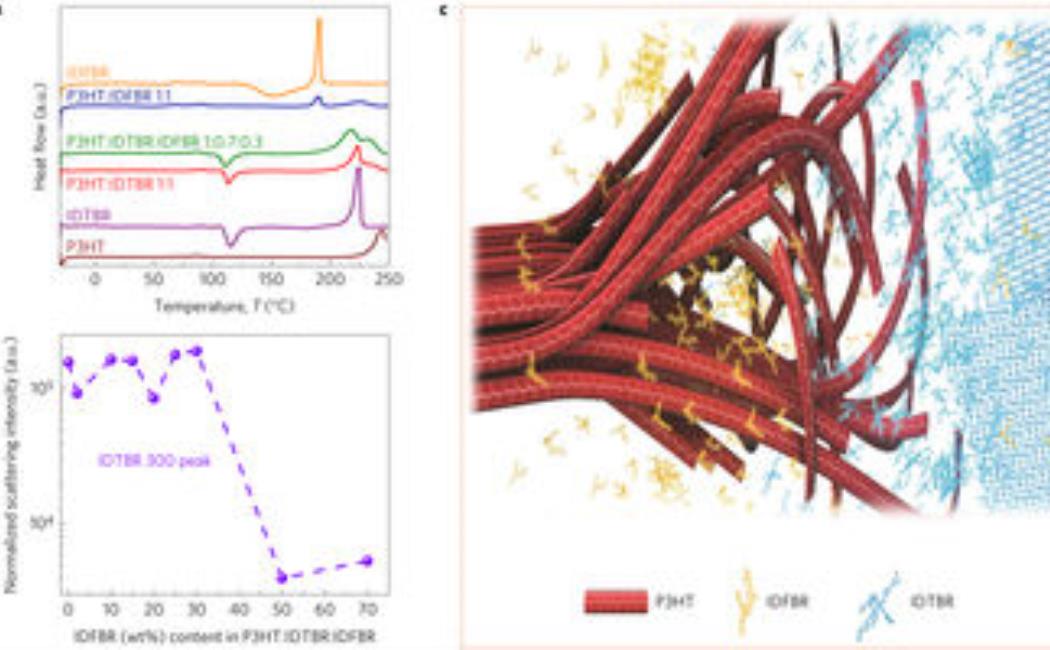Reducing the efficiency–stability–cost gap of organic photovoltaics with highly efficient and stable small molecule acceptor ternary solar cells
Derya Baran
Raja Shahid Ashraf
David A. Hanifi
Maged Abdelsamie
Nicola Gasparini
Jason A. Röhr
Sarah Holliday
Andrew Wadsworth
Sarah Lockett
Marios Neophytou
Christopher J. M. Emmott
Jenny Nelson
Christoph J. Brabec
Aram Amassian
Alberto Salleo
Thomas Kirchartz
James R. Durrant
Iain McCulloch
Abstract
Technological deployment of organic photovoltaic modules requires improvements in device light-conversion efficiency and stability while keeping material costs low. Here we demonstrate highly efficient and stable solar cells using a ternary approach, wherein two non-fullerene acceptors are combined with both a scalable and affordable donor polymer, poly(3-hexylthiophene) (P3HT), and a high-efficiency, low-bandgap polymer in a single-layer bulk-heterojunction device. The addition of a strongly absorbing small molecule acceptor into a P3HT-based non-fullerene blend increases the device efficiency up to 7.7 ± 0.1% without any solvent additives. The improvement is assigned to changes in microstructure that reduce charge recombination and increase the photovoltage, and to improved light harvesting across the visible region. The stability of P3HT-based devices in ambient conditions is also significantly improved relative to polymer:fullerene devices. Combined with a low-bandgap donor polymer (PBDTTT-EFT, also known as PCE10), the two mixed acceptors also lead to solar cells with 11.0 ± 0.4% efficiency and a high open-circuit voltage of 1.03 ± 0.01 V.
https://www.nature.com/nmat/journal/v16/n3/full/nmat4797.html
